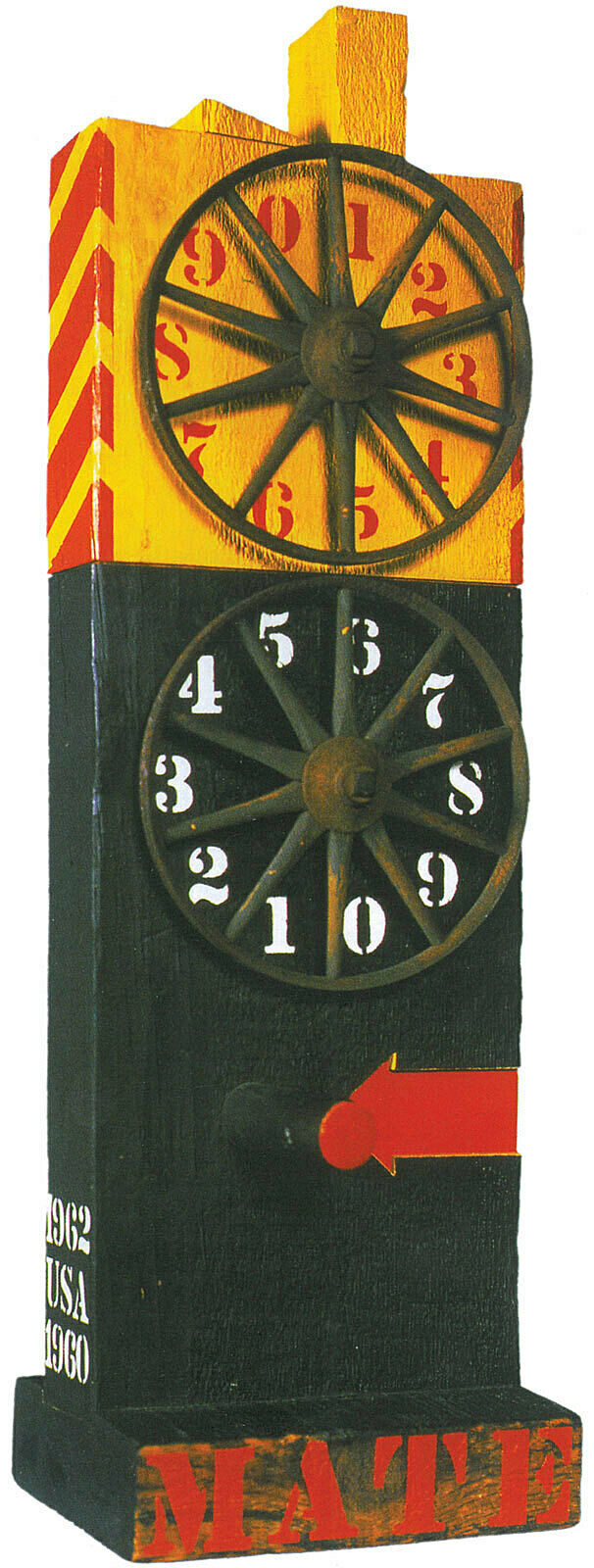Found object sculpture
Make a found object sculpture
“I thought of myself as a painter and a poet and became a sculptor because the potential raw materials were lying outside my studio door.”
—Robert Indiana
“. . .any painting an artist does is possibly a self-portrait. He puts himself into it. It may not be the overt subject, but he’s there, lurking in the shadows somewhere.”
—Robert Indiana
In 1959 Indiana began to make sculptures from objects that he found in his neighborhood. Using these materials allowed him to encode multiple public and personal meanings into his work. He described his process as transforming “the Lost into the Found, Junk into Art, the Neglected into the Wanted, the Unloved into the Loved, Dross into Gold.”
1. View and discuss Indiana’s sculpture Mate (1960-62). Indiana thinks of these sculptures as anthropomorphic or taking on the characteristics of the human form. Define anthropomorphic with your students and discuss how this work might be anthropomorphic.
2. There is also an autobiographical element to this work. The word “mate” had special meaning for Indiana that referenced his environment and the process of making his artwork (see excerpt from “Artist Questionnaire,” February 17, 1966).
As an assignment, ask your students to think of words that they use frequently in their everyday lives. Have them collect a few small found objects that relate to their everyday lives (what they eat, drink, or see, where they go, their style, what they wear, and what they like. For example: cereal boxes, ticket stubs, candy wrappers, pencils, beverage containers, accessories, images, and souvenirs.) Ask students to make a small sculpture that incorporates their found objects and words (which can be stenciled, hand-lettered, or cut and pasted) that relate to their everyday lives. View and discuss students’ sculptures. How did they represent themselves and their everyday lives? What personal meanings did they include?

